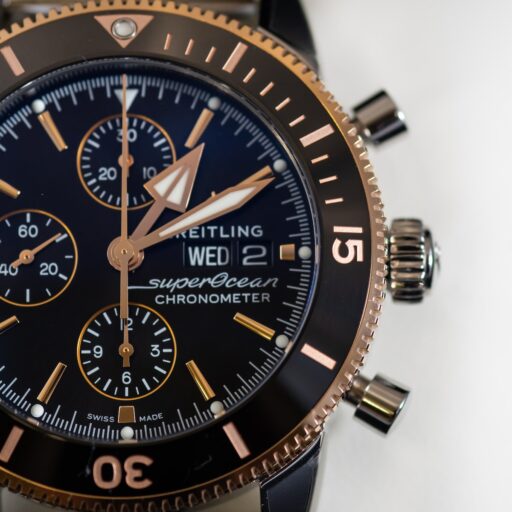Support our educational content for free when you purchase through links on our site. Learn more
Who Invented the Original Watch? [2024] ⌚
Quick Answer: Peter Henlein, a locksmith and clockmaker from Nuremberg, Germany, is often considered the inventor of the watch. He crafted small portable ornamental spring-powered brass clocks, which are regarded as the first watches. Henlein’s innovative craftsmanship and miniaturization of the torsion pendulum and coil spring mechanism revolutionized the concept of wearable timepieces. While he is credited with popularizing the pocket watch, the invention of the watch itself predates him.
Quick Tips and Facts:
- The invention of the watch predates Peter Henlein, but he is often credited with popularizing portable timepieces.
- Henlein’s small ornamental portable clocks, known as “Nuremberg eggs,” are considered the first watches.
- The mainspring, a crucial component of watches, was invented before Henlein’s time.
- Henlein’s craftsmanship and innovation in miniaturization revolutionized the concept of wearable timepieces.
- He was honored with a fountain and medals in 1905 to celebrate the 400th anniversary of the invention of the pocket watch.
Table of Contents
- Background: The Invention of the Watch
- Henlein’s Contribution to Watchmaking
- The Evolution of Portable Timepieces
- The Influence of Peter Henlein
- Henlein in Popular Culture
- FAQ
- Conclusion
- Recommended Links
- Reference Links
Background: The Invention of the Watch

Have you ever wondered who invented the original watch? The history of timekeeping devices is fascinating, and it all started with the invention of the watch. In this article, we’ll explore the origins of the watch and the contributions of Peter Henlein, a locksmith and clockmaker from Nuremberg, Germany.
Henlein’s Contribution to Watchmaking
Peter Henlein is often credited with inventing the watch, but it’s important to note that the concept of portable timekeeping devices predates him. However, Henlein played a significant role in popularizing and revolutionizing the concept of wearable timepieces.
Henlein was one of the first craftsmen to create small ornamental portable clocks, which are regarded as the first watches. These clocks, known as “Nuremberg eggs,” were crafted with intricate details and powered by a spring mechanism. They were fashionable among the nobility of the time and were considered a status symbol.
Henlein’s innovation in miniaturization was crucial to the development of the watch. He successfully scaled down the torsion pendulum and coil spring mechanism, making it possible to create smaller and more portable timepieces. This breakthrough allowed people to carry time with them wherever they went, marking a significant shift in timekeeping technology.
The Evolution of Portable Timepieces
While Henlein’s contribution to watchmaking is significant, it’s important to acknowledge that the invention of the watch itself predates him. The first mechanical clocks, known as “verge escapement” clocks, were developed in the 14th century. These clocks used a verge escapement mechanism and weights to keep time.
The invention of the mainspring, a coiled spring that stores energy and powers the watch, is also worth mentioning. The mainspring appeared in the early 15th century, before Henlein’s time. It was a crucial component in the development of portable timepieces, including the watches crafted by Henlein.
The Influence of Peter Henlein
Peter Henlein’s craftsmanship and innovation had a significant impact on the Renaissance period. His portable watches revolutionized the way people perceived timekeeping. The ability to carry a timepiece on one’s person was a game-changer, allowing for greater convenience and accuracy in timekeeping.
Henlein’s influence extended beyond his lifetime. In the 19th century, his fame as the inventor of the watch rose, and he was recognized through various tributes and commemorations. In 1905, the German Watchmakers’ Association and the City of Nuremberg celebrated the 400th anniversary of the invention of the pocket watch. Henlein was honored with a fountain and medals, cementing his place in horological history.
Henlein in Popular Culture
Peter Henlein’s legacy has been commemorated in popular culture. He has made appearances in novels and films, further solidifying his status as a pioneering figure in watchmaking. His innovative spirit and craftsmanship continue to inspire watch enthusiasts and collectors around the world.
FAQ

Who created the first watch?
The invention of the watch predates Peter Henlein. The first mechanical clocks, known as “verge escapement” clocks, were developed in the 14th century. However, Henlein is often credited with popularizing portable timepieces and revolutionizing the concept of wearable watches.
Read more about “The 200 Best Watch Brands A-Z … ⌚”
Who invented the watch in 1904?
The watch was not invented in 1904. Peter Henlein’s contribution to watchmaking predates 1904. He crafted small portable ornamental spring-powered brass clocks in the 16th century, which are regarded as the first watches.
Read more about “The First Wrist Watch in the World: Cartier …”
Who is the first watch in the world?
The first watch in the world is a matter of debate. While Peter Henlein is often credited with inventing the watch, the concept of portable timekeeping devices predates him. The first mechanical clocks, known as “verge escapement” clocks, were developed in the 14th century.
Read more about “What is a Watch Luxury Brand? Rolex … ⌚”
Who invented the first clock?
The invention of the first clock is attributed to various inventors throughout history. The first mechanical clocks, known as “verge escapement” clocks, were developed in the 14th century. These clocks used a verge escapement mechanism and weights to keep time.
Conclusion

Peter Henlein’s contribution to watchmaking is significant. While he may not have invented the watch itself, his innovative craftsmanship and miniaturization of timekeeping mechanisms revolutionized the concept of wearable timepieces. Henlein’s portable watches, known as “Nuremberg eggs,” were fashionable among the nobility and marked a shift in timekeeping technology. His legacy continues to inspire watch enthusiasts and collectors worldwide.
So, the next time you glance at your wristwatch or pocket watch, remember the pioneering spirit of Peter Henlein and the impact he had on the world of horology.
✅ If you’re interested in exploring more about watch brands and their fascinating histories, check out our Luxury Watch Brands category on Watch Brands™.
Recommended Links
- 👉 CHECK PRICE on: Amazon, Walmart, Etsy | Luxury Watch Brands
- 👉 Shop Peter Henlein on: Amazon, Walmart, Etsy | The 200 Best Watch Brands A-Z 2024 ⌚


